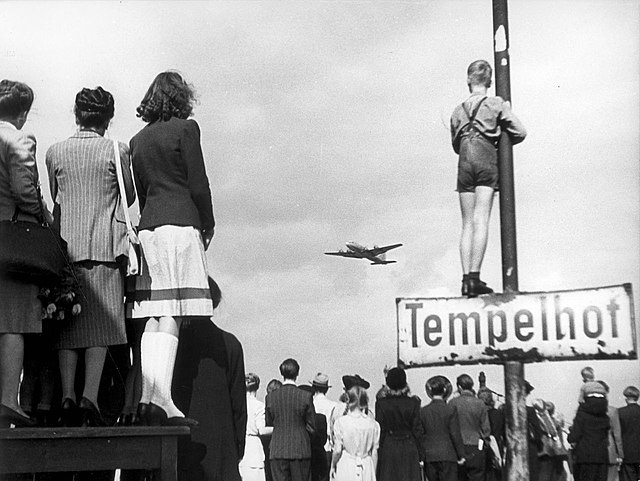Sovietization is the adoption of a political system based on the model of soviets or the adoption of a way of life, mentality, and culture modeled after the Soviet Union. This often included adopting the Cyrillic script and sometimes also the Russian language.
Latvian National Theatre decorated with Soviet symbols (hammer and sickle, red star, red flags and a double portrait of Vladimir Lenin and Joseph Stalin) after the Soviet occupation in 1940. The text on top reads "Long live the USSR!"
The Eastern Bloc, also known as the Communist Bloc (Combloc), the Socialist Bloc, and the Soviet Bloc, was the coalition of communist states of Central and Eastern Europe, Asia, Africa, and Latin America that were aligned with the Soviet Union and existed during the Cold War (1947–1991). These states followed the ideology of Marxism–Leninism, in opposition to the capitalist Western Bloc. The Eastern Bloc was often called the "Second World", whereas the term "First World" referred to the Western Bloc and "Third World" referred to the non-aligned countries that were mainly in Africa, Asia, and Latin America but notably also included former pre-1948 Soviet ally Yugoslavia, which was located in Europe.
1950 Soviet stamp, depicting the flags and peoples of communist states at the time, including those of Eastern Europe
The Big Three (British Prime Minister Winston Churchill, U.S. President Franklin D. Roosevelt and Premier of the Soviet Union Joseph Stalin) at the Yalta Conference, February 1945
Stanisław Mikołajczyk, Polish Prime Minister during World War II, fled Poland in 1947 after facing arrest and persecution.
German civilians watching Western supply planes at Berlin Tempelhof Airport during the Berlin Airlift





